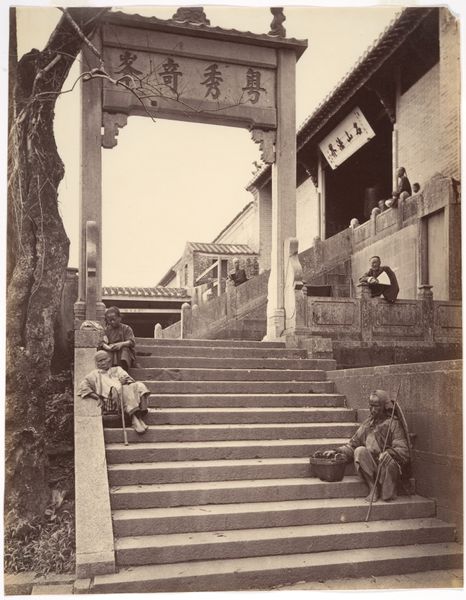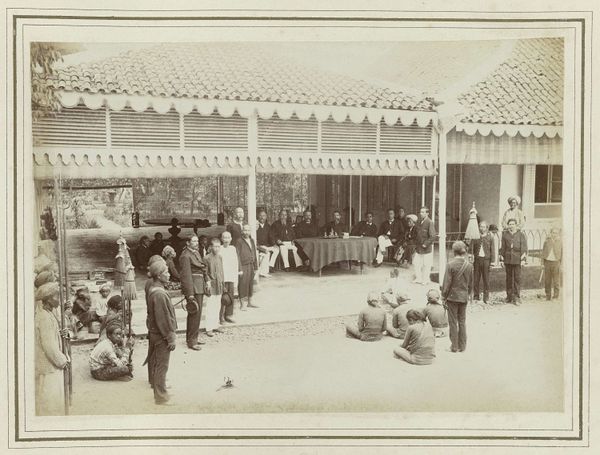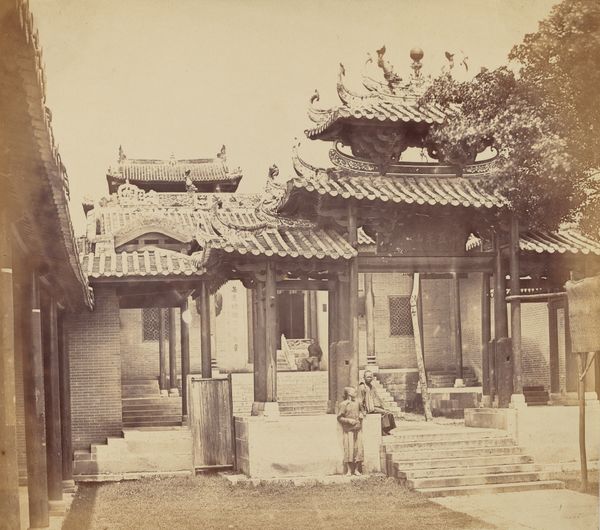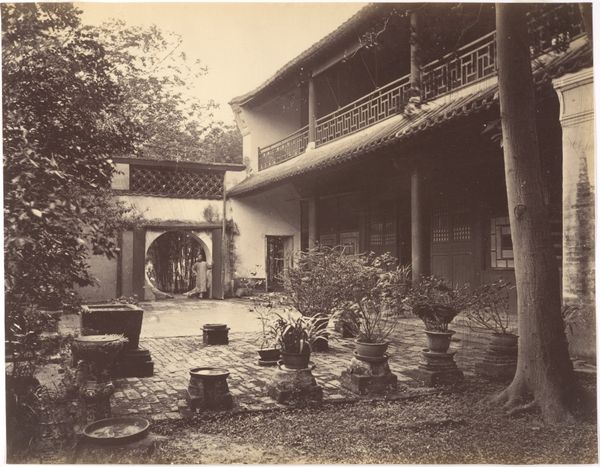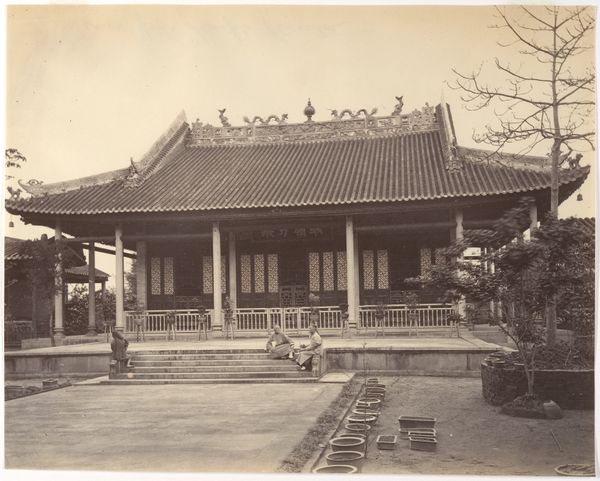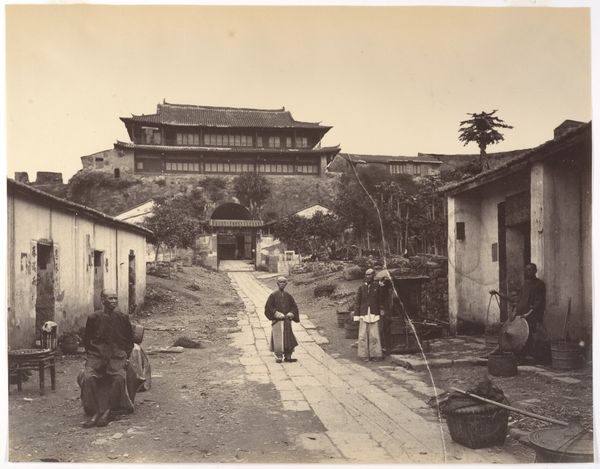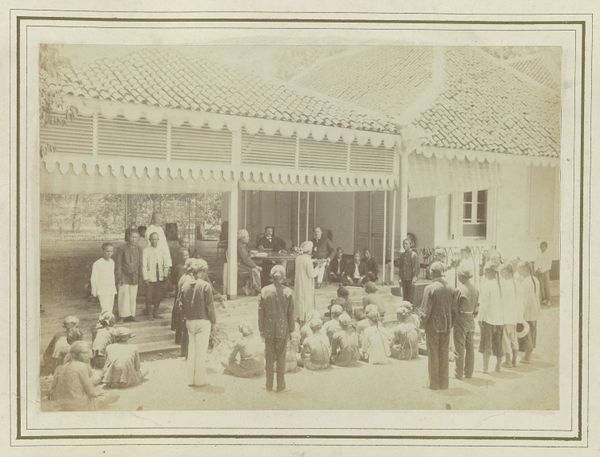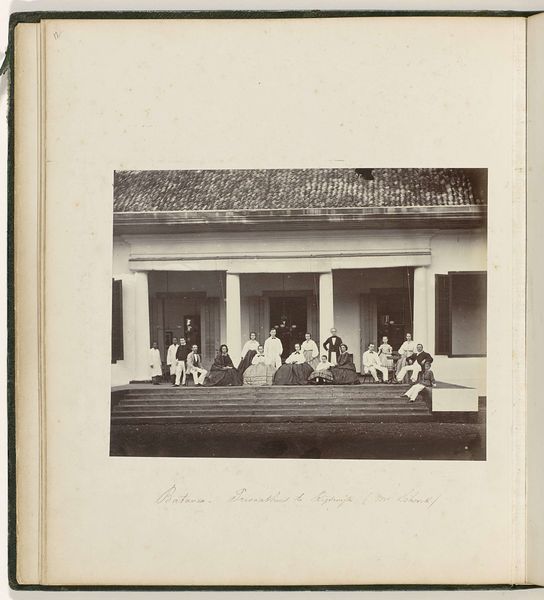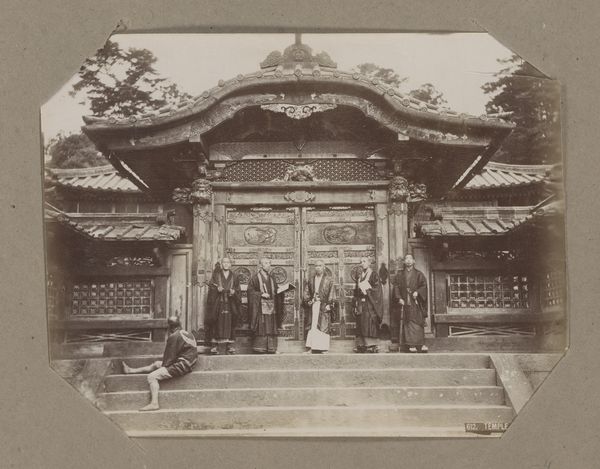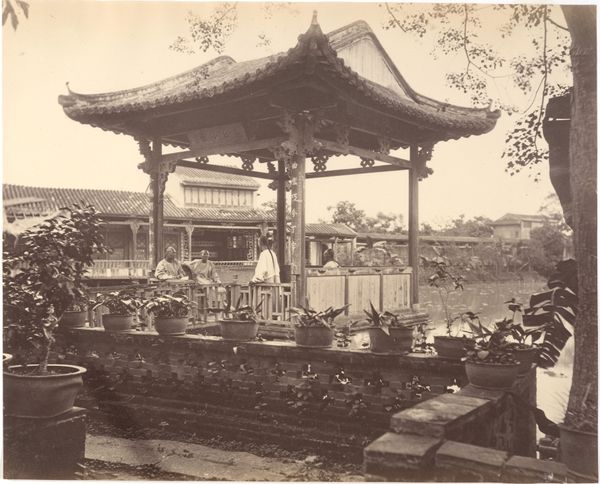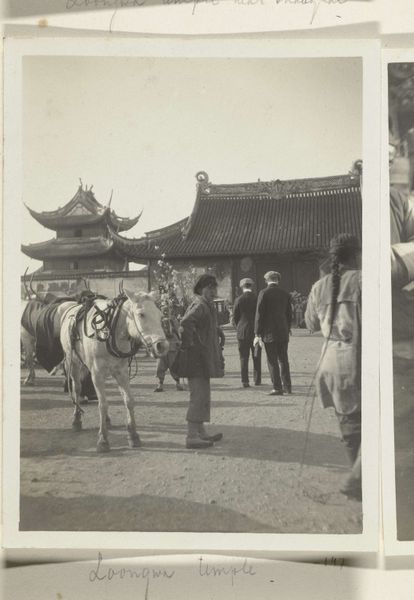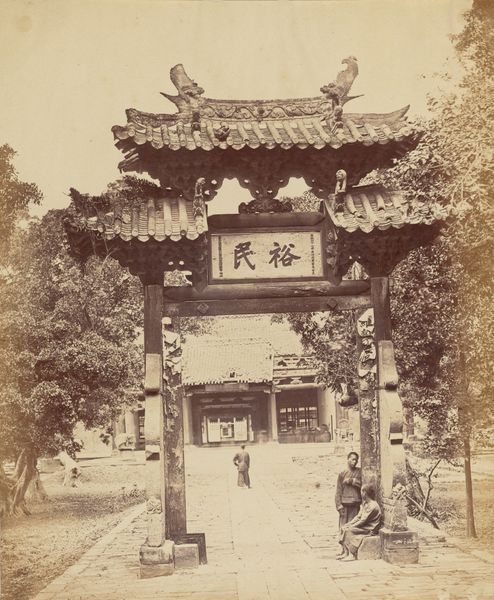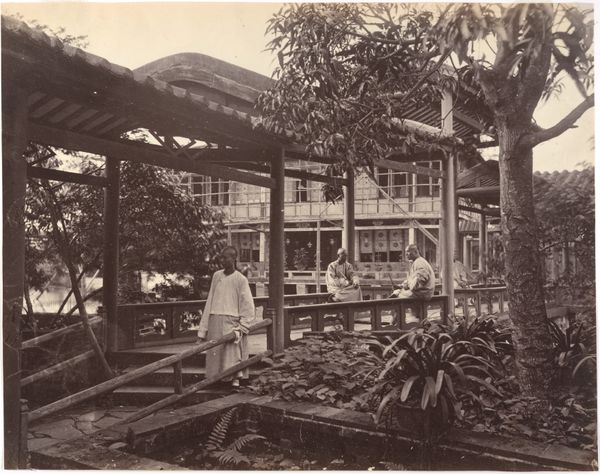
photography, albumen-print
#
asian-art
#
photography
#
historical photography
#
group-portraits
#
men
#
genre-painting
#
albumen-print
Dimensions: Image: 7 5/16 × 10 11/16 in. (18.6 × 27.1 cm)
Copyright: Public Domain
Editor: This is John Thomson’s "Mandarin at Home," taken in 1869. It’s an albumen print showing a group of men and children on the steps of a traditional Chinese building. The sepia tones give it such a strong sense of history. How do you interpret this work? Curator: From a historical perspective, it's essential to recognize the context of 19th-century photography in China. Thomson wasn't just taking a picture; he was participating in the Western gaze upon another culture. Consider the title – "Mandarin at Home" – suggesting an intimate view, yet it was carefully staged for a foreign audience. How might that framing have shaped the reception of the image back in Europe? Editor: So, it's not just a straightforward portrait, but also a constructed representation of Chinese life for Western consumption. I guess the power dynamics are at play even in this seemingly simple photograph? Curator: Precisely. It's a collision of cultures and a visual manifestation of colonial power. Thomson's photographs were instrumental in shaping Western perceptions of China, solidifying stereotypes, but also sparking curiosity and a desire to understand a vastly different world. We have to ask: What role did images like these play in legitimizing Western intervention in China? Editor: That really changes how I see it. I initially just saw a historical document, but it’s so much more complex. The image is performative, curated to align with Western expectations. Curator: Indeed. It makes you consider the photographer's intent and the historical forces at work, turning a family portrait into a powerful artifact of cultural exchange and representation. How do you think contemporary audiences perceive images like these differently now that we're hopefully more conscious of cultural sensitivities and colonial history? Editor: That’s a powerful consideration. Thank you for helping me look past the surface of this photograph. I realize it speaks volumes about the photographer, the subjects, and the cultural narratives that shaped its creation and reception. Curator: Absolutely. Examining historical photography requires navigating ethical considerations and interpreting them through contemporary critical lenses to reveal these layers of historical meaning.
Comments
No comments
Be the first to comment and join the conversation on the ultimate creative platform.
